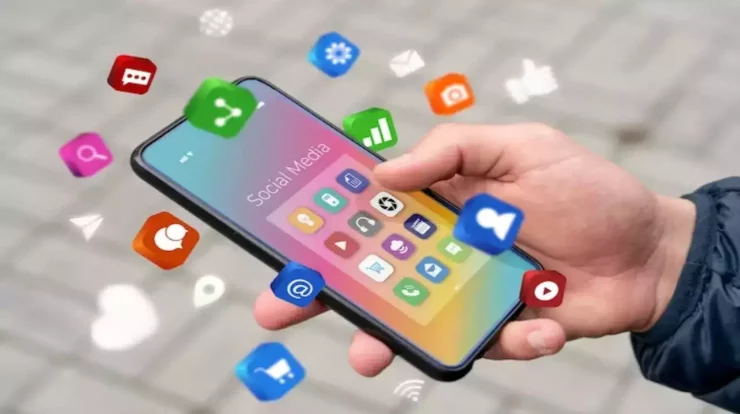
Welcome to our quick and easy guide on how to take screenshots on your Windows computer. Whether you need to capture an important document, save a memorable moment, or troubleshoot an issue, learning how to take screenshots is an essential skill for every Windows user. In this article, we will walk you through different methods and tools available, ensuring that you can capture your screen effortlessly. So, let’s get started!
Key Takeaways:
- Learning how to take screenshots on Windows is essential for various purposes.
- There are various methods and tools available to capture screens on Windows.
- Windows provides a built-in screenshot shortcut, the “Print Screen” feature.
- The Windows Snipping Tool allows for customized screen captures.
- Third-party screen capture tools offer additional features and flexibility.
Using the Windows Screenshot Shortcut.
In this section, we will explain how to use the built-in Windows screenshot shortcut using the “Print Screen” key. Capturing your screen on Windows is made easy with this convenient shortcut. Follow these steps to capture the entire screen or specific areas:
- To capture the entire screen, locate the “Print Screen” (PrtScn) key on your keyboard.
- Press the “Print Screen” key. This will take a screenshot of your entire screen.
- Next, open an image editing software or a document where you want to paste the screenshot. Press “Ctrl + V” to paste the captured screenshot.
- If you only want to capture a specific area of your screen, use the “Alt + Print Screen” key combination instead. This will capture only the active window.
- To capture a specific region of your screen, press the “Windows key + Shift + S” to open the Snipping Tool. Click and drag your cursor to select the desired area. The snipped screenshot will automatically be copied to your clipboard.
- Paste the snipped screenshot into an image editing software or document using “Ctrl + V”.
By using the Windows screenshot shortcut, you can quickly capture and save your screen in just a few easy steps. Whether you need to capture an entire webpage, a specific window, or a custom region, the Windows screenshot shortcut is an efficient way to capture and share visual information.
Using the Windows Snipping Tool.
In this section, we will delve into the functionality of the Windows Snipping Tool, a versatile and user-friendly tool for capturing screenshots on Windows. Whether you need to capture specific regions, windows, or the entire screen, the Snipping Tool provides the necessary features to meet your needs.
The Snipping Tool can be easily accessed through the Windows Start menu or by typing “Snipping Tool” in the Windows search bar. Once opened, you will find several capture options available:
Capture a rectangular snip:
This option allows you to capture a specific rectangular area on your screen. Simply click and drag the cursor to select the desired region, and the Snipping Tool will capture it.
Capture a free-form snip:
If you need to capture a more irregular shape, use the free-form snip option. Click and drag the cursor around the desired area, following its contours. The Snipping Tool will capture the selected region accordingly.
Capture a window snip:
When you want to capture a specific window on your screen, opt for the window snip option. Click on the window you wish to capture, and the Snipping Tool will automatically capture the entire window along with its contents.
Capture a full-screen snip:
If you need to capture the entire screen, including all open windows and applications, choose the full-screen snip option. The Snipping Tool will capture the entire screen with just a single click.
Once you have captured a screenshot using the Snipping Tool, you can save it in various formats, including JPEG, PNG, and GIF. Additionally, the Snipping Tool offers basic annotation features, such as highlighting, pen, and eraser tools, allowing you to enhance your screenshots as needed.
The Windows Snipping Tool is a convenient built-in tool that provides a straightforward solution for capturing and customizing screenshots on Windows. By utilizing its various capture options and editing features, you can easily capture and save screenshots tailored to your specific needs.
Using Third-Party Screen Capture Tools.
If you’re looking for more advanced screen capture options beyond the built-in tools on Windows, third-party screen capture tools can be a great solution. These applications offer additional features and flexibility to capture screens in various ways. Let’s explore some popular options:
1. Snagit
Snagit is a comprehensive screen capture tool trusted by professionals and businesses. It allows you to capture screenshots, record videos, and even create GIFs. With its user-friendly interface and a range of editing options, Snagit is a powerful choice for capturing and editing screens on Windows.
2. Greenshot
Greenshot is a lightweight and open-source screen capture tool that offers a simple and intuitive interface. It allows you to capture screenshots, annotate them with text and shapes, and easily share them. Greenshot also supports various capture modes, including window, region, and full-screen capture.
3. Lightshot
If you’re looking for a quick and easy way to capture screens, Lightshot is worth considering. This lightweight tool allows you to capture screenshots, instantly edit them, and share them with others. With its simple interface and customizable hotkeys, Lightshot offers a seamless screen capture experience.
These are just a few examples of the many third-party screen capture tools available for Windows. Depending on your specific needs, you can explore different options and choose the one that suits you best. Remember to visit the respective websites to download and install these tools.
Now, let’s dive into a step-by-step guide on how to capture screens using these third-party tools:
- Download and install the desired screen capture tool from their official website.
- Launch the tool and familiarize yourself with its interface.
- Explore the capture options, such as full screen, window, or region capture.
- Adjust any additional settings, such as image format or hotkeys, if applicable.
- Position the screen or area you want to capture.
- Click the capture button or use the specified hotkey to initiate the capture.
- Once captured, you can edit and annotate the screenshot if the tool provides such features.
- Save the captured screenshot to your desired location on your computer.
These steps should help you get started with capturing screens using third-party screen capture tools on Windows. Experiment with different tools and explore their features to find the one that best suits your needs.
Editing and Saving Screenshots.
Once you’ve captured a screenshot on Windows, you may want to make some edits before saving it. Windows provides basic editing features that allow you to enhance your screenshots and make them more visually appealing.
Editing Screenshots
After capturing a screenshot, you can open it in an image editing software such as Microsoft Paint or Adobe Photoshop. These applications provide various editing tools to help you refine your screenshots.
- **Crop**: Use the crop tool to remove any unwanted parts of the screenshot and focus on the important content.
- **Resize**: Adjust the size of the screenshot to fit your requirements. You can make it smaller for easy sharing or enlarge it for better visibility.
- **Annotate**: Add text, arrows, shapes, or highlights to draw attention to specific areas of the screenshot and provide more context.
- **Adjust Colors**: Enhance the colors and contrast of the screenshot to make it more vibrant and clear.
By utilizing these editing tools, you can customize your screenshots to meet your specific needs and make them more informative and visually appealing.
Saving Screenshots
Once you are satisfied with the edits, it’s time to save your screenshot. When saving screenshots on Windows, it’s important to choose the appropriate file format to maintain the quality of the image.
The recommended file formats for saving screenshots on Windows are:
- **PNG**: PNG (Portable Network Graphics) format is suitable for capturing screenshots as it supports high-quality images with lossless compression. It is widely supported and compatible with most devices and platforms.
- **JPEG**: JPEG (Joint Photographic Experts Group) format is ideal for saving screenshots when file size is a concern. It offers good image quality with higher compression, resulting in smaller file sizes.
When saving your screenshot, make sure to choose a descriptive and relevant file name that reflects the content of the screenshot, making it easier to locate and identify later.
With the ability to edit and save your screenshots on Windows, you can capture, enhance, and share visual content effortlessly.
Conclusion.
In this article, we have covered various methods and tools for taking screenshots on Windows. Knowing how to capture your screen is a valuable skill that can greatly enhance your productivity and communication.
We started by explaining the Windows screenshot shortcut using the “Print Screen” key, which allows you to capture the entire screen or specific areas effortlessly. We then introduced the Windows Snipping Tool, a versatile tool for capturing customized screenshots of specific regions, windows, or the full screen.
Additionally, we explored third-party screen capture tools that offer advanced features and customization options. These tools provide a wide range of functionalities to meet your specific screenshot needs.
Lastly, we discussed editing and saving screenshots on Windows. Understanding the basics of editing and choosing the right file format can help you create high-quality screenshots that effectively convey information.
By following these methods and tips, you can become proficient in capturing and managing screenshots on Windows, enhancing your ability to share information, troubleshoot issues, and collaborate effectively.
FAQ
How do I take a screenshot on Windows?
To take a screenshot on Windows, you can use various methods. The simplest way is to press the “Print Screen” key on your keyboard. This captures the entire screen and saves it to your clipboard. You can then paste it into any program such as Paint or Word and save it as an image file.
Is there a shortcut for taking a screenshot on Windows?
Yes, there is a shortcut for taking a screenshot on Windows. Besides the “Print Screen” key, you can press the “Windows key + Shift + S” to activate the built-in Snipping Tool. This allows you to capture a specific area of your screen and save it as an image.
Can I capture a specific window instead of the entire screen?
Absolutely! To capture a specific window, use the “Alt + Print Screen” key combination. This will capture only the active window and save it to your clipboard, allowing you to paste and save it as an image file.
Are there any third-party screen capture tools available for Windows?
Yes, there are numerous third-party screen capture tools available for Windows users. Some popular options include Lightshot, Greenshot, and Snagit. These tools often provide additional features and customization options compared to the built-in Windows methods.
Can I edit my screenshots before saving them?
Certainly! After capturing a screenshot, you can use various image editing programs like Paint, Photoshop, or even the built-in Snipping Tool to make edits. These programs allow you to crop, resize, annotate, and add text or arrows to your screenshots before saving them.
What file formats are recommended for saving screenshots on Windows?
When saving screenshots on Windows, the most common and widely supported file formats are PNG (Portable Network Graphics) and JPEG (Joint Photographic Experts Group). PNG is great for preserving image quality, while JPEG offers smaller file sizes but with a slight loss in quality.



